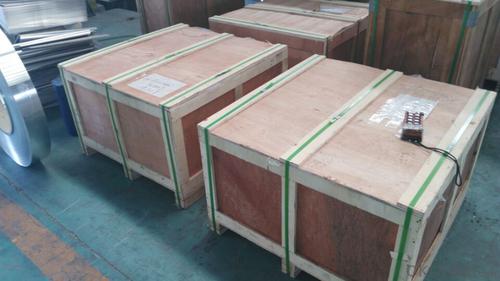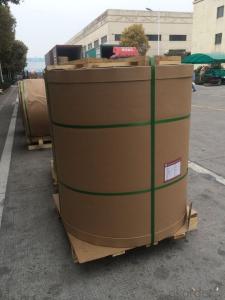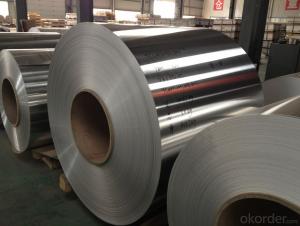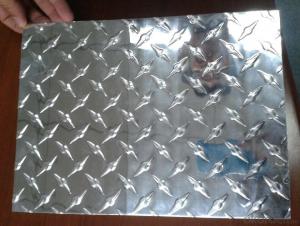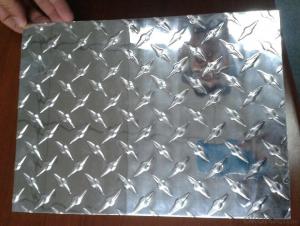Aluminum Sheets - Best Drawn Aluminum Slab Stocks in Warehouse
- Loading Port:
- Shanghai
- Payment Terms:
- TT OR LC
- Min Order Qty:
- 1 m.t
- Supply Capability:
- 6000 m.t/month
OKorder Service Pledge
OKorder Financial Service
You Might Also Like
Specification
1.Structure of Product Description
Cold rolled aluminum sheet is widely used in the field of construction field and decoration field, etc.
There are many different grades, such as: 1000 series, 2000 series,
8000 series5000 series, 7000series,etc. The detailed grade are as follows: 1010, 1050,1060,1100, 2024, 3003, 3005, 3105, 5052,5754,5083,6061,6063,8011, etc.
The temper is include H14, H22, O,F, H24, H44,H112, etc.
2. Main features of the product
a.Competitive price
b.Frist-Class Service.
3. Image.
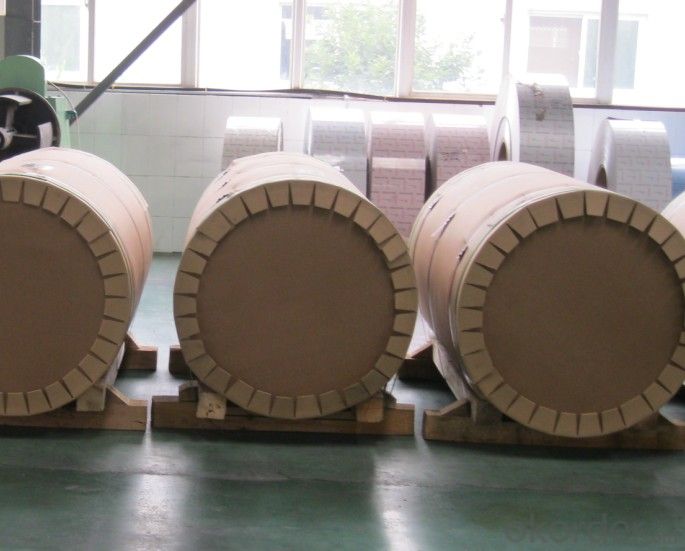

4.Product detailed sizes:
500MM*500MM,1000mm*2000mm, 600MM*600MM,800MM*800MM,900MM*900MM,
1219mm*2438mm,100mm*3000mm, etc.
5. FAQ:
What is the quality standard?
---Usually our standard is GB3880-2006 or others.
What is the width range?
---It is from00mm, etc.
What is the length range:
---It is from0mm, etc.
What is the MOQ for your products yet?
---Normally it is around 7tons/each size.
How many tonxport in one year?
---Normally it is around 600 tons totally.
Where is your client from?
---Normally itey, UAE, Saudi Arabia, Japan, USA, England,Canada,etc.
What is your mainly products?
---Normally theynd hot rolled and cold drawn aluminum sheet,small-5-bar checkered sheet,big-5-bar checkered cold rolm sheet, mirror finish aluminium sheet,aluminum sandwich panel,ETC, aluminum composite panel,etc.
- Q: Which is better, metal ceiling, galvanized steel sheet and aluminum sheet?
- Each has its own characteristics; galvanized steel plate is better than aluminum plate; the weight of aluminum sheet is lighter than that of galvanized steel sheet;
- Q: how many protons,nuetrons, and electrons are in aluminum?
- Aluminum is from group 3 and there for has 3 electrons in its outer shell and desires 5 to fill it. it is going to react with any aspects from group 5 that desire aluminum's 3 electrons.
- Q: As for graphite and aluminum sheet, which one has a better thermal conductivity?
- aluminum sheet
- Q: Is aluminum sheet recyclable?
- Yes, aluminum sheet is highly recyclable. Aluminum is one of the most sustainable and environmentally friendly materials, as it can be recycled indefinitely without losing its quality. The recycling process of aluminum sheet involves melting it down to its liquid form, which requires significantly less energy compared to the production of primary aluminum from raw materials. Recycling aluminum sheet not only conserves natural resources but also reduces greenhouse gas emissions and saves energy. It is estimated that recycling one ton of aluminum sheet saves about nine tons of CO2 emissions. Therefore, aluminum sheet recycling is not only economically viable but also an essential practice for maintaining a sustainable and eco-friendly environment.
- Q: Are 101 aluminum sheets suitable for marine environments?
- Indeed, marine environments are indeed suitable for 101 aluminum sheets. Recognized for its exceptional corrosion resistance, 101 aluminum is a high-strength alloy that proves to be perfect for marine applications. It can endure the harsh circumstances of saltwater, including exposure to salt spray and water immersion, without undergoing corrosion or deterioration. Furthermore, 101 aluminum possesses commendable weldability and formability, enabling it to be effortlessly shaped into a multitude of marine components like boat hulls, decks, and equipment. The strength, durability, and corrosion resistance of 101 aluminum sheets establish them as a dependable option for marine environments.
- Q: Where does China make aluminum plate?
- In many parts of the country have aluminum factory, the old state-owned enterprises have 101, SWA aluminum plant, located in the southwest, northeast china. The emerging aluminum processing base in Henan, due to resource advantages, the largest aluminum factory, the price is relatively low.
- Q: Can aluminum sheets be used for electrical busbars?
- Yes, aluminum sheets can be used for electrical busbars. Aluminum is a highly conductive material that has good electrical and thermal conductivity properties. It is also lightweight and cost-effective compared to other metals like copper. However, there are certain considerations when using aluminum sheets for busbars. Aluminum has higher resistance compared to copper, so larger cross-sectional areas may be required to compensate for this. Additionally, proper insulation and joint connections must be implemented to prevent any potential galvanic corrosion issues between the aluminum busbars and other metals in the electrical system. Overall, aluminum sheets can be a suitable choice for electrical busbars, but the specific application requirements and design considerations should be carefully evaluated to ensure optimal performance and safety.
- Q: What is the use?
- The three and 3000 series aluminum on behalf of 300330033A21. Also known as China's 3000 series aluminum antirust aluminum production process is more outstanding.3000 series aluminum is made of manganese as main components. The contents of 1.0-1.5 in between. Is a series of anti rust function better. Routine application in air conditioning, ice box, car etc. in the moist environment, price more than 1000 written columns, is a commonly used alloy series.The four and 4000 series aluminum aluminum on behalf of 4A014000 series belongs to the high silicon content series. Usually silicon content between 4.5-6.0%. Belongs to the building material, mechanical parts, forging materials, welding materials; low melting point, good corrosion resistance of the product description: has the characteristics of heat resistance, wear resistanceThe five and 5000 Series 5052.5005.5083.5A05 series.5000 series aluminum plate belongs to the representative of the more commonly used aluminium alloy series, the main elements of magnesium, magnesium content in 3-5%. Also called aluminum magnesium alloy. The main characteristics of low density, high tensile strength, elongation rate is high. In the same area under the weight of the aluminium magnesium alloy is lower than that of other series. It is commonly used in aviation, such as aircraft fuel tank. The application in the conventional industries are more widely. The processing technology for slab continuous casting and rolling, which belongs to the aluminum plate series so can do deep processing. Oxidation belongs to one of the more mature aluminum series in China 5000 series aluminum plate.
- Q: What is the weight of aluminium plate now?
- The proportion of pure aluminum is 2.702g/c square meters. General are aluminum alloy, the proportion of the different components, different, but the difference is not great.
- Q: project on aluminum and i cant think of a good/funny slogan for it! HELP! i have already seen the other possibilities on google, try to be unique, and creative! but if you cant just answer the flipping question PLZ!
- Once worth more than Gold Aluminum: It's the flipping answer If government could read your thoughts, you can always wear aluminum head gear. Aluminum - The super wealthy recycle it. Lucky Element 13 - Aluminum Say no to radiation from machines; Say yes to Aluminum Nothing Says Christmas like Shinny Metallic Reynolds Gift Wrapping Aluminum - it's worth more money than slogans because I get those for free over the Internet
Send your message to us
Aluminum Sheets - Best Drawn Aluminum Slab Stocks in Warehouse
- Loading Port:
- Shanghai
- Payment Terms:
- TT OR LC
- Min Order Qty:
- 1 m.t
- Supply Capability:
- 6000 m.t/month
OKorder Service Pledge
OKorder Financial Service
Similar products
Hot products
Hot Searches
Related keywords


